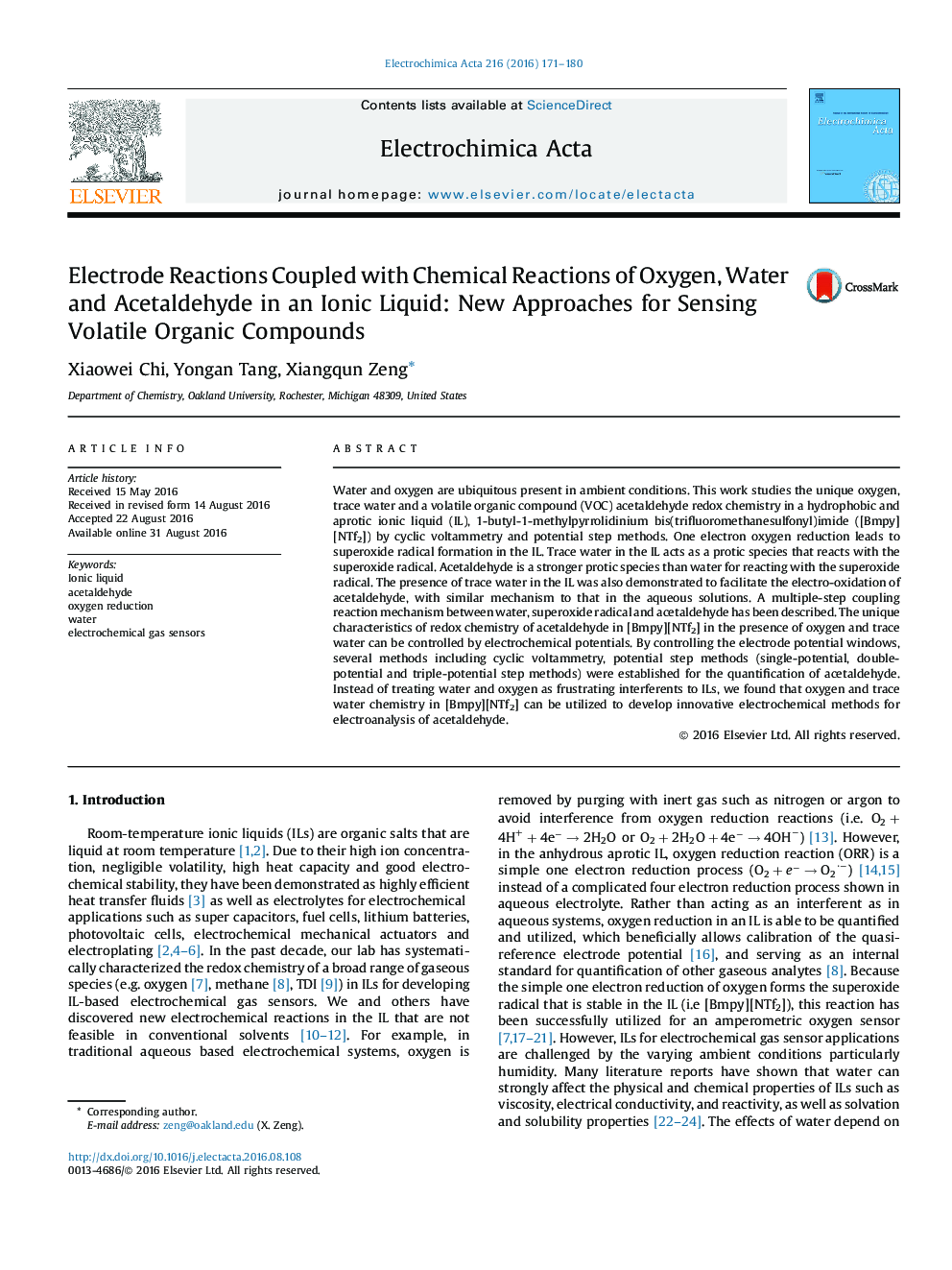| Article ID | Journal | Published Year | Pages | File Type |
|---|---|---|---|---|
| 4767766 | Electrochimica Acta | 2016 | 10 Pages |
Abstract
Water and oxygen are ubiquitous present in ambient conditions. This work studies the unique oxygen, trace water and a volatile organic compound (VOC) acetaldehyde redox chemistry in a hydrophobic and aprotic ionic liquid (IL), 1-butyl-1-methylpyrrolidinium bis(trifluoromethanesulfonyl)imide ([Bmpy][NTf2]) by cyclic voltammetry and potential step methods. One electron oxygen reduction leads to superoxide radical formation in the IL. Trace water in the IL acts as a protic species that reacts with the superoxide radical. Acetaldehyde is a stronger protic species than water for reacting with the superoxide radical. The presence of trace water in the IL was also demonstrated to facilitate the electro-oxidation of acetaldehyde, with similar mechanism to that in the aqueous solutions. A multiple-step coupling reaction mechanism between water, superoxide radical and acetaldehyde has been described. The unique characteristics of redox chemistry of acetaldehyde in [Bmpy][NTf2] in the presence of oxygen and trace water can be controlled by electrochemical potentials. By controlling the electrode potential windows, several methods including cyclic voltammetry, potential step methods (single-potential, double-potential and triple-potential step methods) were established for the quantification of acetaldehyde. Instead of treating water and oxygen as frustrating interferents to ILs, we found that oxygen and trace water chemistry in [Bmpy][NTf2] can be utilized to develop innovative electrochemical methods for electroanalysis of acetaldehyde.
Related Topics
Physical Sciences and Engineering
Chemical Engineering
Chemical Engineering (General)
Authors
Xiaowei Chi, Yongan Tang, Xiangqun Zeng,
